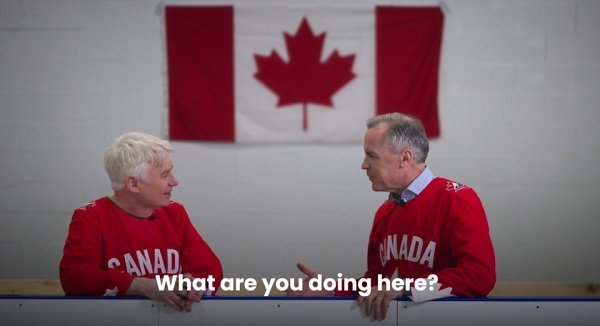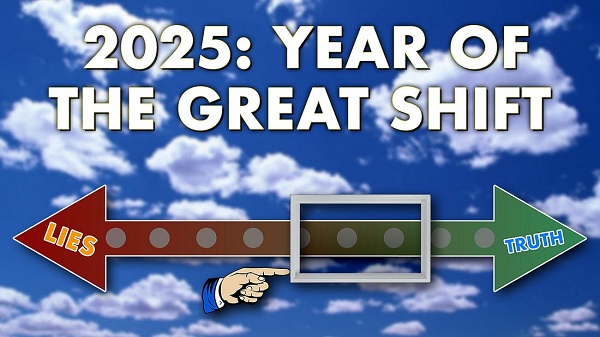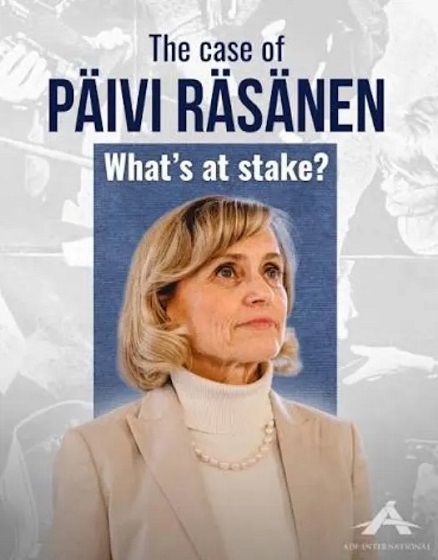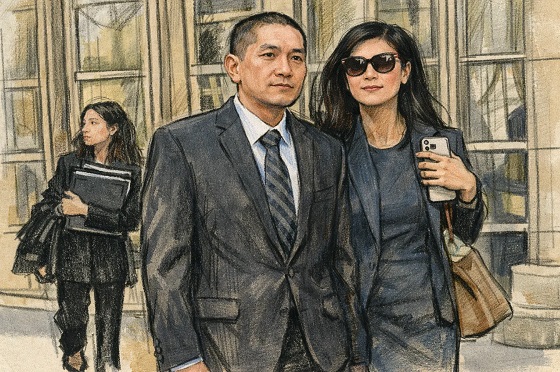Uncategorized
Venezuela standoff turns deadly as troops block aid delivery

CUCUTA, Colombia — A U.S.-backed drive to deliver foreign aid to Venezuela met strong resistance as troops loyal to President Nicolas Maduro blocked the convoys at the border and fired tear gas on protesters in clashes that left two people dead and some 300 injured.
As night fell Saturday, opposition leader Juan Guaido refrained from asking supporters to continue risking their lives trying to break through the government’s barricades at the Colombian and Brazilian borders. Instead, he said he would meet U.S.
But he did make one last appeal to troops to let the aid in and urged the international community to keep “all options open” in the fight to oust Maduro given Saturday’s violence.
“How many of you national guardsmen have a sick mother? How many have kids in school without food,” he said, standing alongside a warehouse in the Colombian city of Cucuta where 600 tons of mostly U.S.-supplied boxes of food and medicine have been stockpiled. “You don’t owe any obedience to a sadist…who celebrates the denial of humanitarian aid the country needs.”
Earlier, Maduro, who considers the aid part of a coup plot and has refused to let it in, struck a defiant tone, breaking diplomatic relations with Colombia, accusing its “fascist” government of serving as a staging ground for a U.S.-led effort to oust him from power and possibly a military invasion.
“My patience has run out,” Maduro said, speaking at a rally of red-shirted supporters in Caracas and giving Colombian diplomats 24 hours to leave the country.
Throughout the turbulent day Saturday, as police and protesters squared off on two bridges connecting Venezuela to Colombia, Guaido made repeated calls for the military to join him in the fight against Maduro’s “dictatorship.” Colombian authorities said more than 60 soldiers answered his call, deserting their posts in often-gripping fashion, though most were lower in rank and didn’t appear to dent the higher command’s continued loyalty to Maduro’s socialist government.
In one dramatic high point, a group of activists led by exiled lawmakers managed to escort three flatbed trucks of aid past the halfway point into Venezuela when they were repelled by security forces. In a flash the cargo caught fire, with some eyewitnesses claiming the National Guardsmen doused a tarp covering the boxes with gas before setting it on fire. As a black cloud rose above, the activists — protecting their faces from the fumes with vinegar-soaked cloths — unloaded the boxes by hand in a human chain stretching back to the Colombian side of the bridge.
“They burned the aid and fired on their own people,” said 39-year-old David Hernandez, who was hit in the forehead with a tear gas canister that left a bloody wound and growing welt. “That’s the definition of dictatorship.”
For weeks, U.S. President Donald Trump’s administration and its regional allies have been amassing emergency food and medical supplies on three of Venezuela’s borders with the aim of launching a “humanitarian avalanche.” It comes exactly one month after Guaido, in a direct challenge to Maduro’s rule, declared himself interim president at an outdoor rally.
Even as the 35-year-old lawmaker has won the backing of more than 50 governments around the world, he’s so far been unable to cause a major rift inside the military — Maduro’s last-remaining plank of support in a country ravaged by hyperinflation and widespread shortages.
Late Saturday, U.S. Secretary of State Mike Pompeo called on Venezuelan security forces to “do the right thing” by allowing humanitarian assistance into the country.
The clashes started well before Guaido straddled a semi-truck and waved to supporters in a ceremonial send-off of the aid convoy from Cucuta. In the Venezuelan border town of Urena, residents began removing yellow metal barricades and barbed wire blocking the Santander bridge. Some were masked youth who threw rocks and later commandeered a city bus and set it afire.
“We’re tired. There’s no work, nothing,” Andreina Montanez, 31, said as she sat on a curb recovering from the sting of tear gas used to disperse the crowd.
The single mom said she lost her job as a seamstress in December and had to console her 10-year-old daughter’s fears that she would be left orphaned when she decided to join Saturday’s protest.
“I told her I had to go out on the streets because there’s no bread,” she said. “But still, these soldiers are scary. It’s like they’re hunting us.”
At the Simon Bolivar bridge, a group of aid volunteers in blue vests calmly walked up to a police line and shook officers’ hands, appealing for them to join their fight.
But the goodwill was fleeting and a few hours later the volunteers were driven back with tear gas, triggering a stampede.
At least 60 members of security forces, most of them lower-ranked soldiers, deserted and took refuge inside Colombia, according to migration officials. One was a National Guard major. Colombian officials said 285 people were injured, most left with wounds caused by tear gas and metal pellets that Venezuelan security forces fired.
A video provided by Colombian authorities shows three soldiers at the Simon Bolivar bridge wading through a crowd with their assault rifles and pistols held above their heads in a sign of surrender. The young soldiers were then ordered to lie face down on the ground as migration officials urged angry onlookers to keep a safe distance.
“I’ve spent days thinking about this,” said one of the soldiers, whose identity was not immediately known. He called on his comrades to join him: “There is a lot of discontent inside the forces, but also lots of fear.”
Guaido, who has offered amnesty to soldiers who join the opposition’s fight, applauded their bravery, saying it was a sign that support for Maduro was crumbling. Later, he greeted five of the military members, who in turn offered a salute, calling the opposition leader Venezuela’s “
“They aren’t deserters,” Guaido said. “They’ve decided to put themselves on the side of the people and the constitution. … The arrival of liberty and democracy to Venezuela can’t be detained.”
Analysts warn that there may be no clear victor and humanitarian groups have criticized the opposition as using the aid as a political weapon.
“Today marked a further blow to the Maduro regime, but perhaps not the final blow that Guaido, the U.S. and Colombia were hoping for,” said Michael Shifter, president of the Inter-American Dialogue in Washington. “Threats and ultimatums from Washington directed to the generals may not be the best way to get them to flip. In fact, they are likely to have the opposite effect.”
International leaders including U.N. Secretary-General Antonio Guterres are appealing for the sides to avoid violence. But at least two people were killed and another 21 injured in the town of Santa Elena de Uairen, near the border with Brazil, according to local health officials.
Amid the sometimes-chaotic and hard-to-verify flow of information, opposition lawmakers and Guaido said the first shipment of humanitarian aid had crossed into Venezuela from Brazil — although reports from the ground revealed that two trucks carrying the aid had only inched up to the border itself.
Late Saturday, Guaido tweeted that the day’s events had obliged him to “propose in a formal manner to the international community that we keep all options open to liberate this country which struggles and will keep on struggling.”
___
Henao reported from Urena, Venezuela. AP Writers Joshua Goodman and Scott Smith contributed to this report from Caracas, Venezuela.
Christine Armario And Luis Andres Henao, The Associated Press
Uncategorized
Mortgaging Canada’s energy future — the hidden costs of the Carney-Smith pipeline deal


Much of the commentary on the Carney-Smith pipeline Memorandum of Understanding (MOU) has focused on the question of whether or not the proposed pipeline will ever get built.
That’s an important topic, and one that deserves to be examined — whether, as John Robson, of the indispensable Climate Discussion Nexus, predicted, “opposition from the government of British Columbia and aboriginal groups, and the skittishness of the oil industry about investing in a major project in Canada, will kill [the pipeline] dead.”
But I’m going to ask a different question: Would it even be worth building this pipeline on the terms Ottawa is forcing on Alberta? If you squint, the MOU might look like a victory on paper. Ottawa suspends the oil and gas emissions cap, proposes an exemption from the West Coast tanker ban, and lays the groundwork for the construction of one (though only one) million barrels per day pipeline to tidewater.
But in return, Alberta must agree to jack its industrial carbon tax up from $95 to $130 per tonne at a minimum, while committing to tens of billions in carbon capture, utilization, and storage (CCUS) spending, including the $16.5 billion Pathways Alliance megaproject.
Here’s the part none of the project’s boosters seem to want to mention: those concessions will make the production of Canadian hydrocarbon energy significantly more expensive.
As economist Jack Mintz has explained, the industrial carbon tax hike alone adds more than $5 USD per barrel of Canadian crude to marginal production costs — the costs that matter when companies decide whether to invest in new production. Layer on the CCUS requirements and you get another $1.20–$3 per barrel for mining projects and $3.60–$4.80 for steam-assisted operations.
While roughly 62% of the capital cost of carbon capture is to be covered by taxpayers — another problem with the agreement, I might add — the remainder is covered by the industry, and thus, eventually, consumers.
Total damage: somewhere between $6.40 and $10 US per barrel. Perhaps more.
“Ultimately,” the Fraser Institute explains, “this will widen the competitiveness gap between Alberta and many other jurisdictions, such as the United States,” that don’t hamstring their energy producers in this way. Producers in Texas and Oklahoma, not to mention Saudi Arabia, Venezuela, or Russia, aren’t paying a dime in equivalent carbon taxes or mandatory CCUS bills. They’re not so masochistic.
American refiners won’t pay a “low-carbon premium” for Canadian crude. They’ll just buy cheaper oil or ramp up their own production.
In short, a shiny new pipe is worthless if the extra cost makes barrels of our oil so expensive that no one will want them.
And that doesn’t even touch on the problem for the domestic market, where the higher production cost will be passed onto Canadian consumers in the form of higher gas and diesel prices, home heating costs, and an elevated cost of everyday goods, like groceries.
Either way, Canadians lose.
So, concludes Mintz, “The big problem for a new oil pipeline isn’t getting BC or First Nation acceptance. Rather, it’s smothering the industry’s competitiveness by layering on carbon pricing and decarbonization costs that most competing countries don’t charge.” Meanwhile, lurking underneath this whole discussion is the MOU’s ultimate Achilles’ heel: net-zero.
The MOU proudly declares that “Canada and Alberta remain committed to achieving Net-Zero greenhouse gas emissions by 2050.” As Vaclav Smil documented in a recent study of Net-Zero, global fossil-fuel use has risen 55% since the 1997 Kyoto agreement, despite trillions spent on subsidies and regulations. Fossil fuels still supply 82% of the world’s energy.
With these numbers in mind, the idea that Canada can unilaterally decarbonize its largest export industry in 25 years is delusional.
This deal doesn’t secure Canada’s energy future. It mortgages it. We are trading market access for self-inflicted costs that will shrink production, scare off capital, and cut into the profitability of any potential pipeline. Affordable energy, good jobs, and national prosperity shouldn’t require surrendering to net-zero fantasy.If Ottawa were serious about making Canada an energy superpower, it would scrap the anti-resource laws outright, kill the carbon taxes, and let our world-class oil and gas compete on merit. Instead, we’ve been handed a backroom MOU which, for the cost of one pipeline — if that! — guarantees higher costs today and smothers the industry that is the backbone of the Canadian economy.
This MOU isn’t salvation. It’s a prescription for Canadian decline.
Uncategorized
Cost of bureaucracy balloons 80 per cent in 10 years: Public Accounts

The cost of the bureaucracy increased by $6 billion last year, according to newly released numbers in Public Accounts disclosures. The Canadian Taxpayers Federation is calling on Prime Minister Mark Carney to immediately shrink the bureaucracy.
“The Public Accounts show the cost of the federal bureaucracy is out of control,” said Franco Terrazzano, CTF Federal Director. “Tinkering around the edges won’t cut it, Carney needs to take urgent action to shrink the bloated federal bureaucracy.”
The federal bureaucracy cost taxpayers $71.4 billion in 2024-25, according to the Public Accounts. The cost of the federal bureaucracy increased by $6 billion, or more than nine per cent, over the last year.
The federal bureaucracy cost taxpayers $39.6 billion in 2015-16, according to the Public Accounts. That means the cost of the federal bureaucracy increased 80 per cent over the last 10 years. The government added 99,000 extra bureaucrats between 2015-16 and 2024-25.
Half of Canadians say federal services have gotten worse since 2016, despite the massive increase in the federal bureaucracy, according to a Leger poll.
Not only has the size of the bureaucracy increased, the cost of consultants, contractors and outsourcing has increased as well. The government spent $23.1 billion on “professional and special services” last year, according to the Public Accounts. That’s an 11 per cent increase over the previous year. The government’s spending on professional and special services more than doubled since 2015-16.
“Taxpayers should not be paying way more for in-house government bureaucrats and way more for outside help,” Terrazzano said. “Mere promises to find minor savings in the federal bureaucracy won’t fix Canada’s finances.
“Taxpayers need Carney to take urgent action and significantly cut the number of bureaucrats now.”
Table: Cost of bureaucracy and professional and special services, Public Accounts
| Year | Bureaucracy | Professional and special services |
|
$71,369,677,000 |
$23,145,218,000 |
|
|
$65,326,643,000 |
$20,771,477,000 |
|
|
$56,467,851,000 |
$18,591,373,000 |
|
|
$60,676,243,000 |
$17,511,078,000 |
|
|
$52,984,272,000 |
$14,720,455,000 |
|
|
$46,349,166,000 |
$13,334,341,000 |
|
|
$46,131,628,000 |
$12,940,395,000 |
|
|
$45,262,821,000 |
$12,950,619,000 |
|
|
$38,909,594,000 |
$11,910,257,000 |
|
|
$39,616,656,000 |
$11,082,974,000 |
-

 Health2 days ago
Health2 days agoFDA warns ‘breast binder’ manufacturers to stop marketing to gender-confused girls
-

 Uncategorized23 hours ago
Uncategorized23 hours agoMortgaging Canada’s energy future — the hidden costs of the Carney-Smith pipeline deal
-

 Agriculture2 days ago
Agriculture2 days agoSupply Management Is Making Your Christmas Dinner More Expensive
-

 International2 days ago
International2 days ago2025: The Year The Narrative Changed
-

 Business1 day ago
Business1 day agoThere’s No Bias at CBC News, You Say? Well, OK…
-

 Daily Caller2 days ago
Daily Caller2 days agoTrump Reportedly Escalates Pressure On Venezuela With Another Oil Tanker Seizure
-

 International24 hours ago
International24 hours agoAustralian PM booed at Bondi vigil as crowd screams “shame!”
-

 Opinion1 day ago
Opinion1 day agoReligion on trial: what could happen if Canada passes its new hate speech legislation










